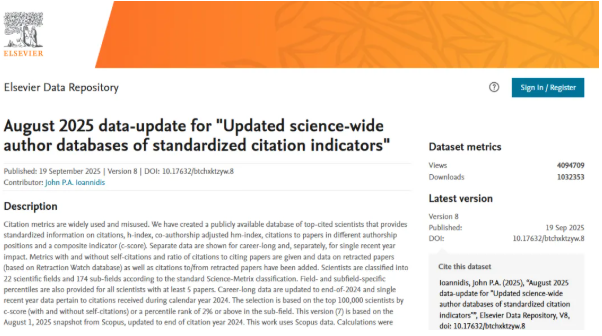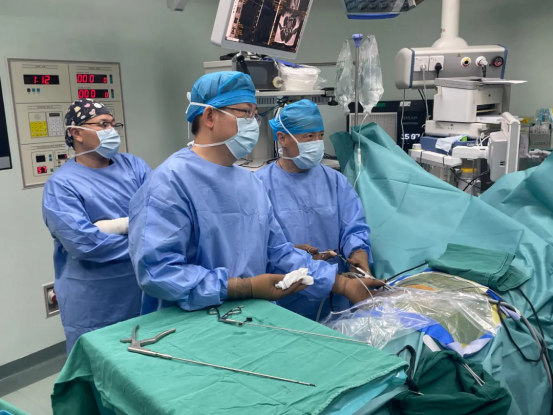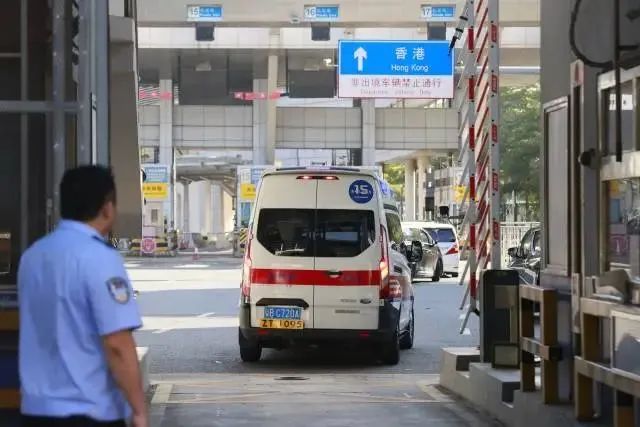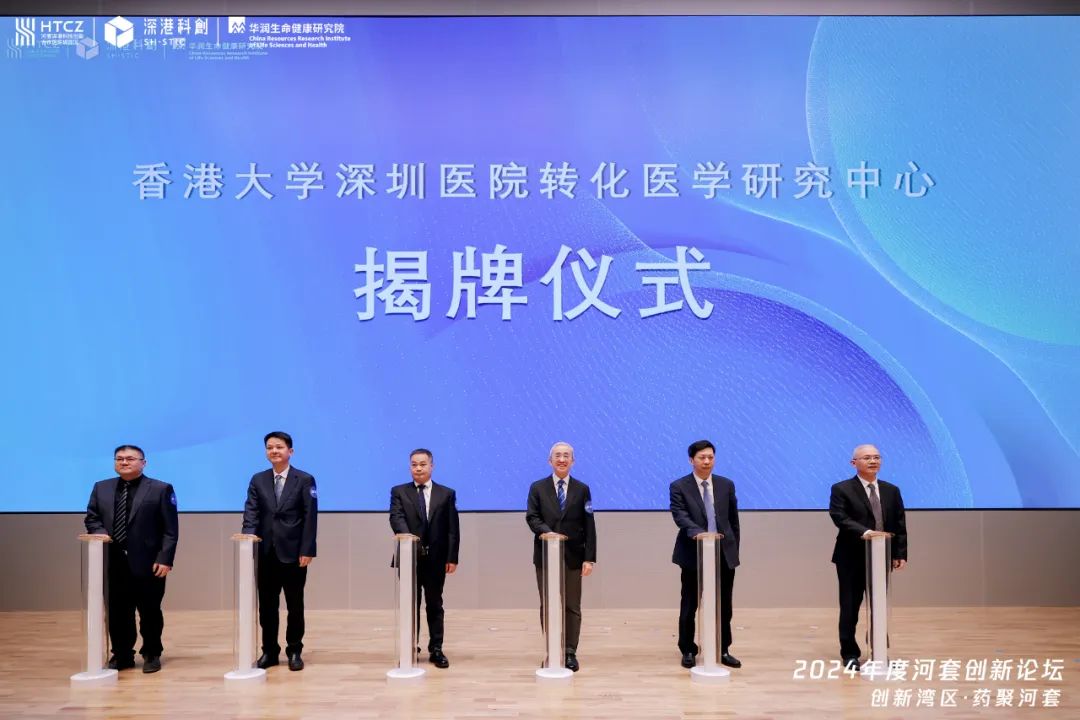2025

Top 2% Globally! 12 Experts from This Hospital Named in World's Top Scientists List
On September 19, 2025, Stanford University released the "Stanford University Top 2% Scientists List 2025".According to the list, 12 scholars and experts from The University of Hong Kong, who are employed or hold honorary appointments at The University of Hong Kong-Shenzhen Hospital, were selected for the "2025 Scientific Impact List".Website to query the Top 2% Scientists List:https://elsevier.digitalcommonsdata.com/datasets/btchxktzyw/8It is reported that the Top 2% Scientists List is a collaborative project between the Elsevier database and the team of Professor John P. A. Ioannidis from Stanford University. The list is published on the Mendeley Data website, which is under the Elsevier database.The list is based on a systematic analysis of citation data from the Scopus database. Using a composite score (C-score) that incorporates six indicators—including citations (distinguishing between self-citations and citations by others, with self-citation data provided), H-index, and HM-factor—the list selects the world's top 2% of scientists from nearly 7 million researchers based on career-long and single-year scientific impact. The selection covers 22 major scientific fields and 174 subfields, providing a measure of scientists' long-term research performance and offering a more objective and genuine reflection of their influence.Scholars selected for the Global Top 2% Scientists List demonstrate exceptional worldwide influence in their research fields and have made outstanding contributions to the advancement of their disciplines..2025

Hong Kong Patient Lee Finds Relief from Lumbar Disc Herniation Pain Excruciating "Knife-like" Pain Turning Point in Shenzhen
Mr. Lee (pseudonym), a Hong Kong patient suffering from severe pain due to lumbar disc herniation, experienced a recurrence and worsening of symptoms shortly after undergoing traditional lumbar surgery at another hospital. Recently, he regained a "pain-free life" after undergoing minimally invasive endoscopic spinal surgery at the University of Hong Kong-Shenzhen Hospital (HKU-SZH).Dr. Wu Tailin from the hospital’s Spine Surgery Division examined Mr.Lee and noted a 5 cm surgical scar on his lower back. In January 2025, Mr.Lee had been diagnosed with lumbar disc herniation at another hospital due to intense lower back pain and "knife-like" pain radiating down his left leg, severely limiting his mobility. He underwent traditional open lumbar surgery, but the pain only temporarily eased before recurring and intensifying.Lee tried various conservative treatments, but the pain persisted. "My friends saw my condition and suggested I seek treatment in Shenzhen. I had wanted to come earlier, but the pain was so severe I couldn’t even walk," Lee said. In late June, he visited HKU-SZH’s Spine Surgery Division for consultation.After a thorough examination and imaging review, Dr. Wu confirmed the diagnosis of L4/5 disc herniation and recommended endoscopic discectomy. The case was then discussed with Dr. Fan Degang, Associate Consultant of Spine Surgery, offering Lee new hope.Lateral Approach Avoids Adhesion RisksAwake Surgery with Local AnesthesiaDr. Fan, with over 30 years of experience in orthopedics, specializes in treating spinal conditions. He noted, "The patient’s previous surgery caused severe nerve adhesions, significantly increasing the difficulty and risk of nerve damage in this procedure." To address this, the team opted for a lateral approach, making a 1 cm incision to bypass the adhesion-affected area. Dr. Fan Degang (right) and Dr. Wu Tailin (center) during the surgical procedureIn early July, Lee underwent successful endoscopic discectomy under local anesthesia, remaining awake throughout the two-hour procedure."It was a unique experience. At first, I was nervous, but hearing the doctors’ professional dialogue reassured me," Lee recalled.No drainage tube was needed post-surgery, and Lee was able to walk with assistance. After standardized rehabilitation care, he was discharged the next day with almost no residual pain.Prioritizing Spinal HealthAdopting Healthy HabitsLumbar disc herniation, a common spinal condition, occurs when the intervertebral disc’s nucleus pulposus protrudes due to degenerative changes or external forces, compressing nerve roots and causing pain or numbness in the lower limbs.Dr. Fan emphasized that treatment depends on symptom severity. Mild cases may improve with rest, physical therapy, or traction, while severe cases require medication or surgery. He advised maintaining good posture and exercise habits to delay or prevent the onset of lumbar disc herniation.Dr. Fan Degang conducted physical examination on Mr. Lee"Patient-first" is the philosophy of HKU-SZH. The hospital’s Orthopedics Department, a national key clinical specialty, brings together experts to provide high-quality medical and humanistic services, enhancing health outcomes for Greater Bay Area residents..2025

Government to extend Pilot Scheme for Supporting Patients of Hospital Authority in Guangdong-Hong Kong-Macao Greater Bay Area
The Health Bureau announced on (March 31) the extension of the Pilot Scheme for Supporting Patients of the Hospital Authority in the Guangdong-Hong Kong-Macao Greater Bay Area (Pilot Scheme) for one year till March 31 next year, with a view to enabling eligible patients of the Hospital Authority (HA) to choose to receive subsidised consultation services at the designated collaborating healthcare institution in the Guangdong-Hong Kong-Macao Greater Bay Area (GBA). The Scheme aims to provide Hong Kong people with more choices when receiving HA's services, and is currently applicable to the University of Hong Kong-Shenzhen Hospital (HKU-SZH). From May 10, 2023 until the end February this year, a total of 5 100 eligible patients have participated in the Pilot Scheme, with over 60 per cent being elderly aged 65 or above. According to a patient survey conducted by the HKU-SZH in the end of last year, about 90 per cent of the respondents found its services satisfactory.To provide more targeted healthcare support to patients, the Pilot Scheme will be enhanced. With effect from April 1, for eligible patients participating in the Pilot Scheme to utilise the subsidy under the Pilot Scheme, they are required to attend consultations at the service departments of the HKU-SZH that correspond with the HA's out-patient service categories for which they have follow-up appointments.Moreover, building on the Pilot Scheme and targeting at specific HA services, the Government is exploring the introduction of more healthcare choices of receiving services in the GBA for patients with follow-up appointments in the HA. Relevant measures will be rolled out once ready.The Secretary for Health, Professor Lo Chung-mau, said, "The Government has long been taking forward collaborations on medical and health aspects in the GBA in accordance with the principles of complementarity and mutual benefits. The HA will continue to explore more in-depth healthcare collaborations with suitable organisations and enhance the efficiency of public healthcare services with a view to shortening patients' waiting time."Apart from the above enhancement measure, other arrangements of the Pilot Scheme upon extension will remain largely the same as those at present. Eligible patients will be required to pay on their own a consultation fee of RMB100 for each consultation received at the designated out-patient clinic of the HKU-SZH (except for specified persons whose medical fees would be waived upon verification by the HA). Such consultation fee payable by eligible patients will be adjusted on January 1 next year in accordance with the specialist out-patient consultation fee as set under the fees and charges reform for public healthcare. The Government will announce the details in due course. The remaining consultation fee will be subsidised by the Pilot Scheme, subject to a cap of RMB2,000. The validity period of the relevant subsidy is from April 1, 2025 to March 31 next year.Meanwhile, the scope of subsidised consultation services under the Pilot Scheme will continue to cover out-patient services provided by the HA, namely anaesthesiology (pain clinic only); cardiothoracic surgery; clinical oncology; ear, nose and throat; eye; gynaecology; internal medicine; neurosurgery; obstetrics; orthopaedics and traumatology (orthopaedics); paediatrics; surgery; and general out-patient services. Episodic illnesses, inpatient or day inpatient, as well as Accident and Emergency services are not included under the scope of subsidised consultation services. Eligible patients are required to attend at the service departments of the HKU-SZH that correspond with the HA's out-patient service categories for which they have medical follow-up to receive subsidised consultation services.The subsidy for existing patients under the Pilot Scheme will expire from March 31,2025. Eligible patients who wish to continue participating in the Pilot Scheme may make appointments through the existing channels whereby the HKU-SZH will make appointments at the departments that correspond with the HA's out-patient service categories for which they have follow-up appointments. They should also complete the declaration to confirm continued participation at the HKU-SZH before receiving any subsidised consultation services. For patients who wish to cease participation in the Pilot Scheme and return to Hong Kong for follow-up consultations at the out- patient clinics of the HA, they may approach the HKU-SZH and the hospital will make referral for them to arrange follow-up appointments at the corresponding out-patient clinics of the HA according to their clinical needs.As for eligible patients who have not participated in the Pilot Scheme before or those who have joined the Scheme but need to have their personal information updated, they may submit their application to the HKU-SZH from April 1,2025 onwards. For enquiries, citizens may also call the HA (Tel. No.: 2300 7070; Service Hours: 9am - 6pm, Mondays to Fridays, except public holidays) or the HKU-SZH (Tel. No.: (+86) 0755-86913101; Service Hours: 8am - 12.30pm and 2pm - 5.30pm, Mondays to Fridays, except public holidays)..2025

Rare disease clinical research center established
Representatives from key institutions receive plaques at the inauguration ceremony of the Shenzhen Rare Disease Clinical Medical Research Center. Liu JinghaoThe Shenzhen Rare Disease Clinical Medical Research Center was officially inaugurated today at the University of Hong Kong-Shenzhen Hospital (HKU-SZH). The launch coincides with the 18th Rare Disease Day, under the theme “More Than You Can Imagine,” further emphasizing the global commitment to raising awareness and supporting those affected by rare diseases.The center, spearheaded by HKU-SZH, is a collaborative effort with 22 medical institutions, research institutes, and enterprises, including the Shenzhen Children’s Hospital and the Shenzhen People’s Hospital. Its primary goal is to develop an integrated network that encompasses rare disease screening, diagnosis, treatment, scientific research, and services. This network is set to form a robust rare disease prevention and treatment system, offering comprehensive support to patients.Globally, there are over 7,000 known rare diseases, with only 5% having specific treatments available. In China, two catalogs of rare diseases cover 207 conditions, but more than 90% of these still lack effective treatment options. The Shenzhen Rare Disease Clinical Medical Research Center is poised to tackle these challenges head-on by advancing research and diagnosis, and by seeking out innovative treatment strategies.Dr. Michael ToKai-tsun (C), director of the orthopedic center at HKU-SZH, provides health consultations for a rare disease patient. Liu JinghaoDr. Michael To Kai-tsun, director of the orthopedic center at HKU-SZH, expressed his determination toward the center’s mission. “We are committed to deepening the research and translation of rare diseases to bring more hope to patients,” he said.The future initiatives of the research center include the establishment of a comprehensive rare disease prevention system, a precision diagnosis platform, the enhancement of multidisciplinary one-stop treatment services, the implementation of standardized diagnosis and treatment protocols, the creation of an information-registration system, and the promotion of transformation of clinical research results.A multidisciplinary health consultation on rare diseases, along with a public charity art and film exhibition, takes place at the HKU-SZHtoday. Chen Chunfeng Shenzhen launched a pilot project for comprehensive services in June 2024 to support rare disease patients, especially those from economically disadvantaged backgrounds. This program allows rare disease patients to apply for financial assistance, with a maximum grant of 50,000 yuan (US$6,868) per person.Credit: Reporter Zhang Yu and Editors Cynthia, Yunfei , Shenzhen DailyEdited by HKU-SZH.2025

Nighttime Heavy Helicopter Airlift Saves Critically Injured Worker
On February 3, 2025 (the sixth day of Lunar New Year), at 18:00 in the evening, The University of Hong Kong-Shenzhen Hospital (hereinafter referred to as HKU-Shenzhen Hospital) received an urgent notification regarding the imminent arrival of a critically injured patient via air medical transport. A worker on an offshore drilling platform over 200 kilometers from Shenzhen had suffered transient loss of consciousness and hypotension due to an ultra-high-pressure petrochemical steam blast. After initial treatment by platform medics, HKU-Shenzhen Hospital was contacted for helicopter evacuation, with an estimated arrival time of 20:00 for further emergency care.Upon notification, the Department of Accident and Emergency (A&E) immediately activated emergency protocols. The trauma team was mobilized, night-flight operations for the helipad were initiated, and the landing area was cleared for safe helicopter arrival. By 19:30, Dr. Shan Aijun, Director of the Department of A&E, had coordinated with the patient's colleagues to assess the situation and led the trauma team to the helipad for preparation.After approximately one hour of flight, the helicopter arrived at HKU-Shenzhen Hospital and landed smoothly at 20:06. Dr. Shan promptly boarded to evaluate the patient, who remained conscious with stable vital signs. Medical staff implemented spinal precautions using a cervical collar and backboard, transferring the patient to a gurney for immediate CT scans.Within 10 minutes, comprehensive imaging of the head, neck, chest, and abdomen was completed. Multidisciplinary specialists conducted on-site image reviews, and by 20:30, the patient returned to the resuscitation area. Subsequent evaluations confirmed blast injuries including left ocular trauma (requiring further corneal/conjunctival assessment), left facial soft tissue damage, bilateral pulmonary contusions, and potential chemical exposure.The emergency team initiated intravenous fluid resuscitation, oxygen therapy, and ocular protection. Following stabilization and multidisciplinary consultation, the patient was admitted for monitoring before being transferred to a local hospital for rehabilitation.As an aviation rescue dispatch point for Shenzhen Emergency Center, HKU-Shenzhen Hospital maintains 24/7 capabilities for heavy helicopter operations. Through collaborations with Hong Kong Fire Services Department and Government Flying Service, the hospital continues to advance aeromedical rescue standards in the Greater Bay Area.This successful night rescue operation demonstrated HKU-Shenzhen Hospital's exceptional emergency response coordination. Notably, as a designated "Trauma Care Center Construction Unit" under China Trauma Care Alliance, the hospital regularly hosts trauma forums to promote standardized rescue protocols across the region.Upholding its "Patient Lives First" philosophy, HKU-Shenzhen Hospital remains committed to delivering high-quality, efficient medical services in the new year, safeguarding community health through continuous emergency care advancements..2024

Direct cross-border ambulance transfers begin 深圳120救护车可直达香港公立医院
In a groundbreaking move to enhance regional healthcare cooperation, a pilot program for direct cross-boundary ambulance transfers between Guangdong Province and Hong Kong was officially launched on November 30th.The first phase of the program will begin with arranging direct cross-boundary ambulance transfers for patients from designated sending hospitals in Shenzhen, such as The University of Hong Kong – Shenzhen Hospital (HKU-SZH), to designated public hospitals in Hong Kong. Medical staff from Shenzhen and Hong Kong exchange patient information during a cross-border direct ambulance drill Oct. 31. Photos from Nanfang DailyUpon assessment and agreement by the teams of designated cross-boundary collaborating hospitals, arrangements can be made for patients with specific clinical needs and suitable clinical conditions to be transferred directly to Hong Kong hospitals without transferring patients between ambulances at boundary control points, thus minimizing any risks posed to patients during transfer. A notable aspect of this pilot program is the participation of mainland medical staff. These healthcare professionals, who will be aboard the ambulances, will apply for limited registration with Hong Kong’s Hospital Authority, thereby obtaining medical qualifications within Hong Kong.The trial program, set to last for one year, is an integral part of the Outline Development Plan for the Guangdong-Hong Kong-Macao Greater Bay Area (GBA). It represents the first practical application of cross-border ambulance services in the region.A cross-border direct ambulance departs Shenzhen and enters Hong Kong during a drill Oct. 31.Kenneth M.C. Cheung, hospital chief executive of HKU-SZH, expressed confidence in the hospital’s ability to provide enhanced medical care for residents in the Greater Bay Area. “We are committed to demonstrating medical integration in the GBA and offering more diverse experiences in healthcare,” said Cheung.To be fully prepared, the governments of Guangdong, Hong Kong, and Macao conducted three drills in August and October of this year, simulating the cross-boundary transfer of patients by ambulance. Guangdong and Hong Kong's health authorities plan to deepen their cooperation and explore expanding the scope of designated hospitals in mainland cities of the GBA, thereby promoting further medical integration in the region.Credit: Reporter Zhang Yu and Editors Cynthia, Yunfei , Shenzhen DailyEdited by HKU-SZH.2024

Hetao forum highlights biomedicine industry
THE 2024 Hetao Innovation Forum on biomedicine took place at the Hetao Innovation Center in Futian District on Novemberthe 25th.At the forum, the University of Hong Kong-Shenzhen Hospital unveiled its Translational Medicine Research Center, and the Shenzhen Second People’s Hospital officially opened its Medical Innovation Technology Transfer Center.Both centers are located in the Shenzhen park of the Hetao Shenzhen-Hong Kong Science and Technology Innovation Cooperation Zone.The Translational Medicine Research Center will concentrate on four areas — oncology, reproductive health, orthopedic diseases, and rare diseases — and work to expedite the conversion of basic medical research findings into clinical applications.The Medical Innovation Technology Transfer Center, an essential platform for the hospital’s transition to a high-level research facility, will focus on the research and development of advanced medical equipment, biomedical technology innovation, and cell and gene therapies.Hua Haining, vice president of Shenzhen-Hong Kong Science and Technology Innovation Cooperation Zone Development Ltd., emphasized that the forum, along with the two new centers, are crucial strides for Shenzhen and Hong Kong in implementing the development outlines of Hetao.Yesterday, the forum featured a keynote speech session and a dialogue session centered on building a biomedicine hub in Hetao. Today, a subforum on organs and organs-on-a-chip is taking place.Situated on the border between Shenzhen and Hong Kong, Hetao, occupying a total area of 389 hectares, serves as a pioneering zone for enhancing technological collaboration between the two cities and acts as a nucleus for the transfer of technological breakthroughs within the Guangdong-Hong Kong-Macao Greater Bay Area.Credit: Reporter Wang Jingli , Shenzhen DailyEdited by HKU-SZH.2024

Shenzhen leads in medical reforms, saves ¥14B in procurement
People wait in line to pick up their prescribed medication at a healthcare center in Nanshan District in this undated file photo. Photo from WeChat account “深卫在线”Shenzhen has taken significant steps to promote medical reforms and introduced innovative mechanisms to revamp its healthcare system, according to a city official at a press conference hosted by the National Health Commission in Shenzhen today.The city has taken a pioneering role in the cancellation of drug markups and the centralized procurement of drugs and medical consumables. These efforts have led to savings of 14 billion yuan (US$1.92 billion) in procurement costs, said Chen Qing, a member of the Standing Committee of the CPC Shenzhen Municipal Committee.Since the beginning of the 14th Five-Year Plan period (2021-2025), Shenzhen has invested a total of 180.5 billion yuan in health finance, with an average annual growth rate of 11%, according to Chen. “The city has established an investment guarantee mechanism for public hospitals, ensuring that all public hospitals operate without debt,” Chen said.He added that in 2023, personal health expenditure accounted for 16.2% of the city’s total health expenditure, indicating that the burden of medical treatment on residents had been greatly reduced.Chen emphasized that Shenzhen has made a significant stride in advancing the internationalization of China’s International Hospital Accreditation Standards, which were compiled by the Shenzhen Hospital Accreditation Research Center. On Sunday, the Pamela Youde Nethersole Eastern Hospital became the first Hong Kong hospital to be accredited under the standards, marking a key milestone in cross-border medical evaluation.On the same day, the Shenzhen Hospital Accreditation Research Center Hong Kong Office was officially opened, which will help expand China’s International Hospital Accreditation Standards to countries and regions along the Belt and Road and around the world.Xu Xiaoping, Party chief of HKU-SZH, shares the hospital's experience in fostering cross-border healthcare integration between Shenzhen and Hong Kong during a field tour for the media this morning. Zhang Yu The University of Hong Kong-Shenzhen Hospital (HKU-SZH) represents a collaborative medical endeavor between Shenzhen and Hong Kong. It has implemented innovative strategies and achieved notable success in fostering cross-border integration of healthcare services, according to Xu Xiaoping, Party chief of the hospital. As the first mainland hospital to pioneer the remote settlement of Hong Kong medical service fees, HKU-SZH has implemented a pilot scheme supporting patients under Hong Kong’s Hospital Authority and the Elderly Health Care Voucher Scheme, providing services for Hong Kong patients more than 167,000 times, Xu said.Additionally, it has taken the initiative to pilot direct cross-boundary ambulance transfers and the Hong Kong and Macao Medicine and Equipment Connect program.“To date, it has received approval to utilize 27 imported medications and 17 imported medical devices, with over 5,000 instances of use. The insights gained from this pilot have been expanded to 45 designated medical institutions across nine cities within the Guangdong-Hong Kong-Macao Greater Bay Area,” Xu noted.For talent connectivity, a mechanism has been set up to align the professional titles of Hong Kong physicians with their mainland counterparts, resulting in 37 esteemed Hong Kong doctors being awarded senior professional titles. They now enjoy equal status in terms of job appointments, research project initiation, and academic discipline development. Luohu District’s medical reform has been a benchmark for the advancement of the healthcare system in Shenzhen. In recent years, the district has also introduced a series of innovative measures, according to Zuo Jinping, head of the Luohu District Government.Zuo said that Luohu District’s medical reform, initiated in 2015, has focused on grassroots-level reforms, emphasizing institutional and mechanism changes aimed at reducing illnesses and hospitalizations while improving public health. The district has strengthened the integration and sharing of medical resources and increased the capacity of community health institutions. Credit:Reporter Zhang Yu and Editor Li Jing, Shenzhen DailyEdited by HKU-SZH.